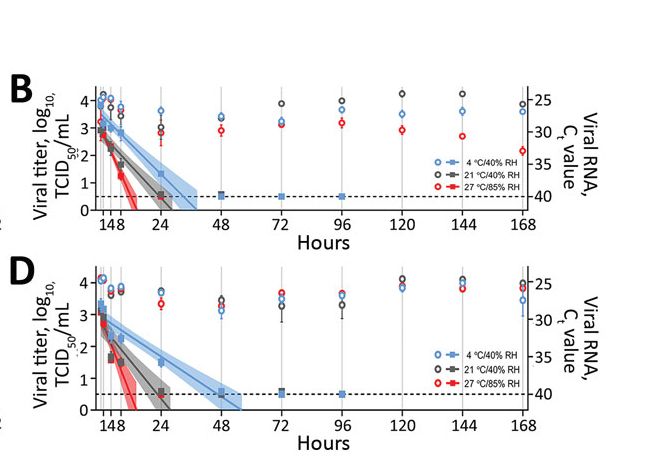While much remains to be learned about the transmission of COVID-19, the scientific consensus appears to be that the ultimate main route of infection is through an individual’s nasal passages and airways as the virus attached to ACE receptors. While we wrote recently about the interaction of climate and the virus, a new study from the CDC looks at the stability of COVID-19 in our bodily fluids.
The research involved an in vitro, laboratory study, utilizing the virus as well as pooled human samples of nasal mucus and sputum, which evidently are commercially available. They determined the presence and viability of the virus in both fluids, on surfaces as well as within the fluids themselves using temperatures and humidity consistent with outdoor temperate winter, summer, and tropical summers. They found:
- COVID-19 was generally less stable at higher temperatures and higher relative humidity. This was true for the liquids and, to a lesser degree, for surfaces.
- Temperature more than humidity seemed to be the critical factor in viral viability.

The squares are viable COVID-19 virus particles at varying temperatures and humidities. The circles show the presence of viral RNA particles.
- While viable virus was identified for about 24 hours, viral particles were present for up to seven days. “These findings suggest that inferences regarding the presence of infectious virus from quantitative reverse transcription PCR data alone should be made with caution.”
We are left with two findings. Climate impacts the viability of COVID-19 so that hoping for a summer “break” from the pandemic is at least biologically plausible. But without information on how much virus is shed and how much is required to infect a susceptible individual, that summer break remains a hope, not a certainty. Air conditioning lowers temperature and humidity, perhaps this too is a factor in the differences in indoor and outdoor transmission. The study demonstrates that the climate within the infected patient, as well as the climate in which they are shedding their virus, are involved in transmission.
In the meantime, wearing a mask is the simplest means to reduce you contaminating the environment and social distancing the most straightforward way of reducing your exposure.
Source: Emerging Infectious Diseases Effect of Environmental Conditions on SARS-CoV-2 Stability in Human Nasal Mucus and Sputum




